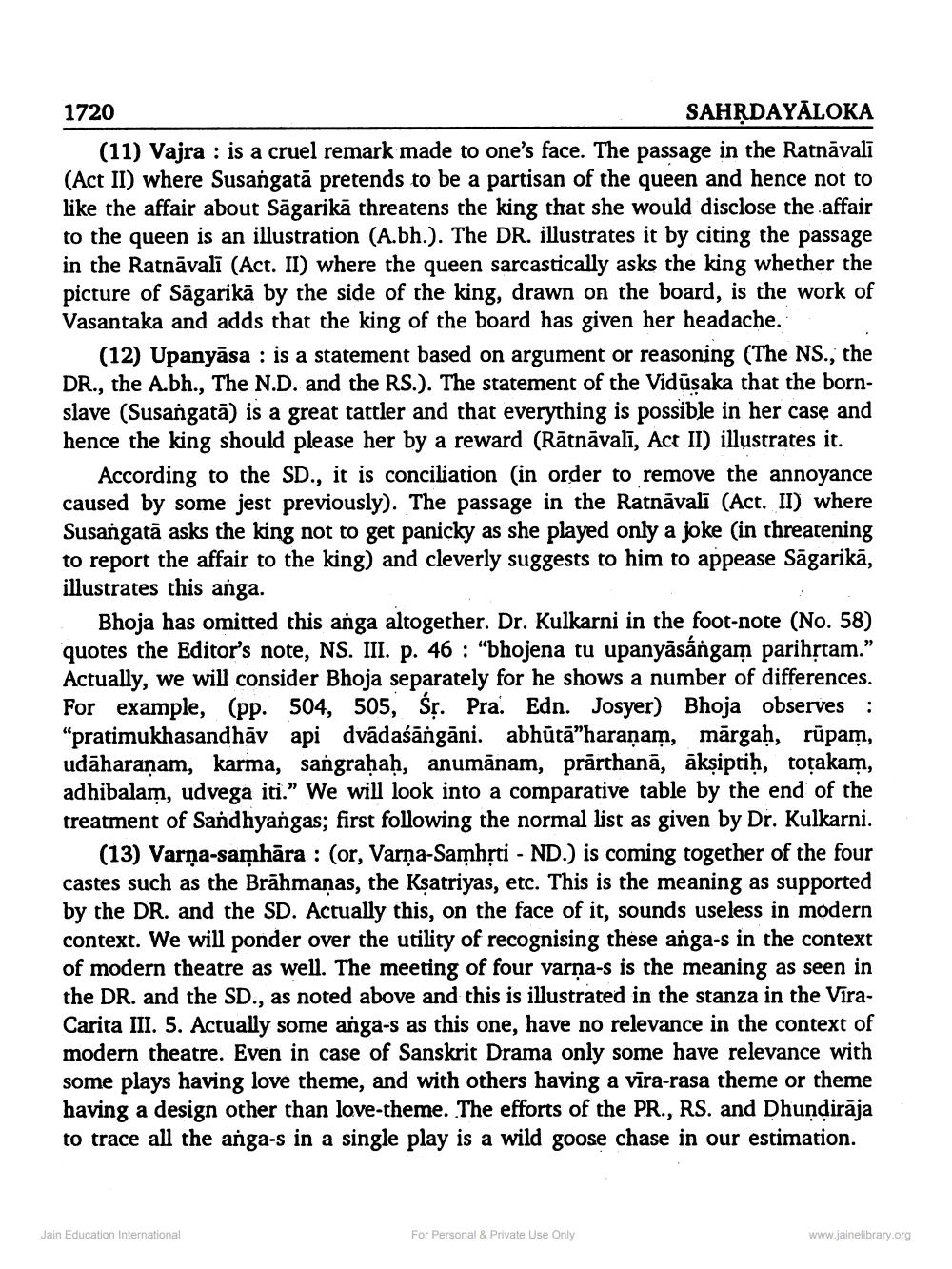________________
1720
SAHRDAYĀLOKA (11) Vajra : is a cruel remark made to one's face. The passage in the Ratnávalī (Act II) where Susangatā pretends to be a partisan of the queen and hence not to like the affair about Sāgarikā threatens the king that she would disclose the affair
e queen is an illustration (A.bh.). The DR. illustrates it by citing the passage in the Ratnāvali (Act. II) where the queen sarcastically asks the king whether the picture of Sāgarikā by the side of the king, drawn on the board, is the work of Vasantaka and adds that the king of the board has given her headache.
(12) Upanyāsa : is a statement based on argument or reasoning (The NS., the DR., the A.bh., The N.D. and the RS.). The statement of the Vidūsaka that the bornslave (Susangatā) is a great tattler and that everything is possible in her case and hence the king should please her by a reward (Rātnāvalī, Act II) illustrates it.
According to the SD., it is conciliation (in order to remove the annoyance caused by some jest previously). The passage in the Ratnāvalī (Act. II) where Susangată asks the king not to get panicky as she played only a joke (in threatening to report the affair to the king) and cleverly suggests to him to appease Sāgarikā, illustrates this anga.
Bhoja has omitted this anga altogether. Dr. Kulkarni in the foot-note (No. 58) quotes the Editor's note, NS. III. p. 46 : “bhojena tu upanyāsángam parihstam.” Actually, we will consider Bhoja separately for he shows a number of differences. For example, (pp. 504, 505, Śr. Pra. Edn. Josyer) Bhoja observes : "pratimukhasandhāv api dvādaśāngāni. abhūtā”haraṇam, mārgaḥ, rūpam, udāharanam, karma, sangrahaḥ, anumānam, prarthanā, ākṣiptih, toțakam, adhibalam, udvega iti." We will look into a comparative table by the end of the treatment of Sandhyangas; first following the normal list as given by Dr. Kulkarni.
(13) Varņa-samhāra : (or, Varna-Samhști - ND.) is coming together of the four castes such as the Brāhmaṇas, the Ksatriyas, etc. This is the meaning as supported by the DR. and the SD. Actually this, on the face of it, sounds useless in modern context. We will ponder over the utility of recognising these anga-s in the context of modern theatre as well. The meeting of four varna-s is the meaning as seen in the DR. and the SD., as noted above and this is illustrated in the stanza in the Vira Carita III. 5. Actually some anga-s as this one, have no relevance in the context of modern theatre. Even in case of Sanskrit Drama only some have relevance with some plays having love theme, and with others having a vīra-rasa theme or theme having a design other than love-theme. The efforts of the PR., RS. and Dhundiraja to trace all the anga-s in a single play is a wild goose chase in our estimation.
Jain Education International
For Personal & Private Use Only
www.jainelibrary.org




